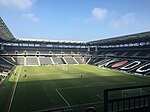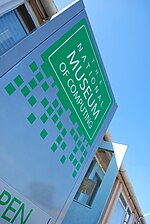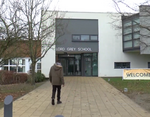Denbigh Hall railway station
Commons category link is locally definedDisused railway stations in BuckinghamshireEngvarB from September 2013Former London and Birmingham Railway stationsPages with no open date in Infobox station ... and 3 more
Railway stations in Great Britain closed in 1838Railway stations in Great Britain opened in 1838Railway stations in Milton Keynes

Denbigh Hall railway station was a temporary terminus station on the London and Birmingham Railway in the Denbigh area of what is now Milton Keynes in Buckinghamshire, England. It was situated about 1 mile (1.6 km) north of Bletchley railway station, near a point where the railway crossed Watling Street. It was open for less than six months, between April and September 1838.
Excerpt from the Wikipedia article Denbigh Hall railway station (License: CC BY-SA 3.0, Authors, Images).Denbigh Hall railway station
V4 Watling Street, Milton Keynes Granby
Geographical coordinates (GPS) Address Nearby Places Show on map
Geographical coordinates (GPS)
| Latitude | Longitude |
|---|---|
| N 52.01 ° | E -0.744 ° |
Address
V4 Watling Street
MK3 6PY Milton Keynes, Granby
England, United Kingdom
Open on Google Maps









